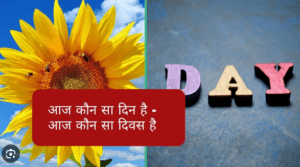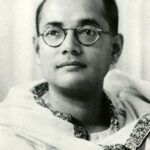India’s Republic Day is an annual national holiday that is celebrated on January 26th, to commemorate the adoption of the Constitution of India in 1950. The Constitution came into effect on this day, making India a republic nation and replacing the Government of India Act 1935. This day marks the transition of India from a British colony to a republic, with a Constitution that guarantees civil liberties and equal rights for all citizens. The Constitution was adopted by the Constituent Assembly on 26th November, 1949, it came into effect on 26th January, 1950, making India a republic nation. Republic Day is celebrated with great enthusiasm and pride throughout the country, it is marked by parades, cultural performances, and the hoisting of the national flag. The main event is held in the capital, New Delhi, where a grand parade is held at Rajpath, which is attended by dignitaries from all over the world, along with the general public. It is a day to honor the Constitution and to reflect on the progress and development of the nation.
The First Republic Day Celebrations in 1950
The parade and hoisting of the national flag
The parade and hoisting of the national flag is an important part of India’s Republic Day celebrations. The main event is held in the capital, New Delhi, where a grand parade is held at Rajpath, which is attended by dignitaries from all over the world, along with the general public. The parade starts with the President of India unfurling the national flag, followed by a 21-gun salute, and the singing of the national anthem. The parade features a display of India’s cultural and military heritage, including floats representing different states and union territories, and performances by school children and artists. The parade also includes a display of various cultural and social themes, showcasing India’s diversity and progress.

The parade culminates with a display of India’s military might and a display of floats from various states, showcasing their culture and traditions. The parade concludes with a display of fireworks and a fly-past by the Indian Air Force. The parade and hoisting of the national flag is a symbol of national unity and pride, and serves as a reminder of the sacrifices made by the freedom fighters and the struggles for independence.
Participation of the general public and government officials
The participation of the general public and government officials is an important aspect of India’s Republic Day celebrations. The main event is held in the capital, New Delhi, where a grand parade is held at Rajpath, which is attended by dignitaries from all over the world, along with the general public. The general public is encouraged to participate in the celebrations and witness the parade, as it is a symbol of national unity and pride. They gather at Rajpath and nearby areas to watch the parade, cultural performance and enjoy the festive atmosphere.

Government officials, including the President of India, the Prime Minister, and other dignitaries also participate in the celebrations. The President of India is the chief guest of the parade and presides over the main event at Rajpath. The Prime Minister and other government officials also attend the parade and hoist the national flag at different locations across the country. The participation of government officials in the celebrations serves as a reminder of the government’s commitment to the Constitution and the welfare of the people.
In addition, various government agencies and department also participate in the parade with their floats, showcasing their work and achievements. This participation of the general public and government officials adds to the spirit of the celebration and reinforces the sense of national unity and pride.
Addition of Cultural and Artistic Performances
Inclusion of cultural and artistic performances is an important aspect of India’s Republic Day celebrations. These performances showcase the diversity and richness of India’s cultural heritage and are an integral part of the parade. These performances are typically done by school children, folk artist and cultural troupes, they represent different regions and communities of India, highlighting their unique customs, traditions, and cultural practices.
The performances include traditional dances, music, and other art forms, such as classical dance, folk dance, and patriotic songs. These performances are aimed at highlighting the cultural richness and diversity of India, and promoting national unity and integration.
The cultural and artistic performances also include tableau, representing different states and union territories, showcasing their culture, traditions, and achievements. These tableaux are usually colorful and vibrant, and represent a visual spectacle, depicting the traditions, customs, and culture of the respective states and union territories.
In addition to these, the parade also includes a display of various cultural and social themes, showcasing India’s diversity and progress. These performances aim to promote national unity and integration and to make people proud of their cultural heritage.
Representation of India’s diverse culture and heritage
The cultural and artistic performances, as well as the tableaux, at India’s Republic Day celebrations serve as a representation of India’s diverse culture and heritage. These performances showcase the diversity and richness of India’s cultural heritage, and highlight the unique customs, traditions, and cultural practices of different regions and communities.

The traditional dances, music, and other art forms that are performed, such as classical dance, folk dance, and patriotic songs, all come from different regions of India, each with its own unique style and significance. These performances aim to promote national unity and integration, by highlighting the cultural richness and diversity of India.
The tableaux also showcase the different states and union territories of India, depicting their culture, traditions, and achievements. These tableaux represent a visual spectacle, showcasing the customs, traditions and culture of the respective states and union territories. They are usually colorful and vibrant, representing a visual representation of India’s diverse culture and heritage.
In this way, the cultural and artistic performances and tableaux, serve as a representation of India’s diverse culture and heritage, promoting national unity and pride.
Addition of Floats representing different states and union territories
Inclusion of floats representing different states and union territories in the parade in the 1960s
In the 1960s, the inclusion of floats representing different states and union territories became an important aspect of India’s Republic Day celebrations. These floats, also known as tableaux, are designed to showcase the culture, traditions, and achievements of the respective states and union territories.
The floats typically depict scenes from the state’s history, culture, and traditions, such as traditional dances, festivals, and handicrafts. They are usually colorful and vibrant, and are designed to represent a visual spectacle, showcasing the customs, traditions and culture of the respective states and union territories.
The inclusion of these floats in the parade is aimed at promoting national unity and integration, by highlighting the cultural richness and diversity of India. It also showcase the achievements of the states and union territories, and encourage them to take pride in their cultural heritage.
The floats also serve as a way to educate the general public about the different cultures and traditions of India, and to promote national integration. It’s a way to showcase the cultural heritage of the country and to make people proud of their cultural heritage.
Representation of India’s growing international presence
The inclusion of foreign dignitaries and guests in India’s Republic Day celebrations, which began in the 1970s and 1980s, is a representation of India’s growing international presence. This participation of foreign dignitaries and guests in the celebrations serves to demonstrate the strong diplomatic relations and cultural ties that India shares with other countries.

The presence of foreign dignitaries and guests also serves as an opportunity for India to showcase its cultural richness and diversity, as well as its progress and development, to the international community. It also serves as an opportunity to strengthen the cultural, economic and political ties with other countries.
The parade also includes a display of floats from various countries, showcasing their culture and traditions, in recent years, the parade has become a platform for India to showcase its cultural heritage and to promote cultural exchange with other countries.
In addition, the presence of foreign dignitaries and guests also serves as a reminder of India’s growing international presence, and its commitment to promoting peace, understanding and cooperation among nations.
Incorporation of Technology and Modernization
The inclusion of technology and modernization in the parade in recent years, such as the use of drones and 3D mapping
In recent years, the inclusion of technology and modernization has become an important aspect of India’s Republic Day celebrations. The parade has evolved to include new technologies such as the use of drones and 3D mapping to enhance the visual spectacle of the event.
The use of drones in the parade, for example, allows for aerial coverage of the parade, providing a unique perspective and adding to the overall visual appeal of the event. Drones equipped with cameras can capture stunning aerial shots of the parade, the floats, and the large crowd.
3D mapping technology is also being used to enhance the visual appeal of the parade. This technology allows for the projection of 3D images onto buildings, floats and other structures, adding a dynamic and interactive element to the parade.
The inclusion of technology and modernization in the parade reflects India’s progress and development as a nation, and serves as a symbol of the country’s commitment to innovation and modernization. It also enhances the visual appeal of the event, making it more attractive to the audience, and making the event more memorable.
Reflecting India’s progress and development
The inclusion of technology and modernization in India’s Republic Day celebrations reflects the country’s progress and development as a nation. The use of new technologies such as drones and 3D mapping, for example, showcases India’s technological advancements, and its commitment to innovation and modernization.
These technologies have been integrated into the parade, adding a new dimension to the event, making it more visually appealing, and providing a unique perspective. The use of drones in the parade, for example, allows for aerial coverage of the parade, providing a unique perspective and adding to the overall visual appeal of the event. 3D mapping technology allows for the projection of 3D images onto buildings, floats and other structures, adding a dynamic and interactive element to the parade.

The inclusion of technology and modernization in the parade also reflects India’s growing international presence and its commitment to promoting peace, understanding and cooperation among nations. It also showcases India’s progress and development as a nation, and serves as a symbol of the country’s commitment to innovation and modernization.
Conclusion
In conclusion, India’s Republic Day celebrations have evolved over the years to reflect the country’s political and social changes. From the first celebrations in 1950, which featured the parade and hoisting of the national flag, to the inclusion of cultural and artistic performances, floats representing different states and union territories, foreign dignitaries, and technology and modernization in recent years, the celebrations have become a symbol of national unity and pride.
The cultural and artistic performances, as well as the tableaux, serve as a representation of India’s diverse culture and heritage, promoting national unity and pride. The floats representing the different states and union territories showcase their culture, traditions, and achievements, promoting national unity and integration. The inclusion of foreign dignitaries and guests in the celebrations reflects India’s growing international presence and its commitment to promoting peace, understanding and cooperation among nations.
The inclusion of technology and modernization in the parade reflects India’s progress and development as a nation and serves as a symbol of the country’s commitment to innovation and modernization. The parade and hoisting of the national flag is a symbol of national unity and pride, and serves as a reminder of the sacrifices made by the freedom fighters and the struggles for independence.












